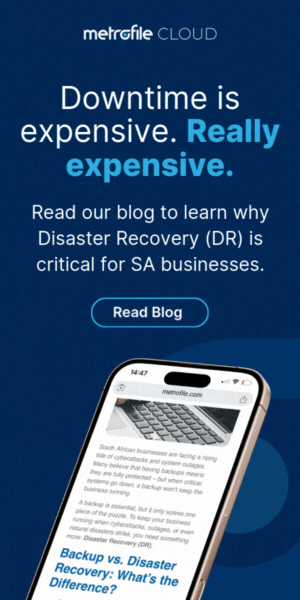[vc_row][vc_column][vc_column_text css=”.vc_custom_1615465483771{margin-bottom: 0px !important;}”]MAIN IMAGE: Paul-Roux de Kock, analytics director for Lightstone
Despite dire predictions house price sales surprised with an exceptional performance last year. Data analytics group Lightstone forecasts three scenarios for residential sales in 2021.
Residential property prices defied Covid-19 conventional wisdom in 2020, and house price inflation ended close to 3% at the end of the year, some 2.7% above Lightstone’s forecast made at the beginning of 2020 and 6% above the highest post Covid-19 prediction. Lightstone anticipates residential sales will continue to hold their own, and we see house price inflation at anything between 2.1% and 4%, with a potential upside in the luxury sector.
Even before Covid-19 struck Lightstone forecasted thatannual house growth was going to dropfrom 1.4% at the end of 2019 to about 0.3% at the end of 2020. “We took this view because oflow economic growth forecastsof about 1% for 2020 and the generally weak housing market conditions that were expected to continue from 2019 into 2020,” says Paul-Roux de Kock, analytics director for Lightstone.
As news of the economic impact of the coronavirus outbreak filtered through international media towards the end of 2019, itstrue impactwas only really felt in Europe in the first quarter of 2020, and in South Africa in the second quarter.
Apprehension turned to panic in many quarters as Covid-19 worked its way into South Africa and the impact of the economic lockdown was assessed.Economic forecasts were hurriedly adjusteddownwards and even the most optimistic economists werepredicting an economic decline of around 10%.“As it happened, this was not far from the -7.3% expected for 2020, howeverhouse prices did not follow economic growthas expected,” says De Kock.
So why did house prices take a different path?
Lightstone, along with other economic commentators,did not anticipate the resilience of the house price marketwith even the most optimistic scenarios forecasting negative house price growth.
Predicting house prices during normal times can be tricky, but predictions amid a once in a lifetime catastrophic event became near impossible. During the last couple of years, the economic environment in South Africadid not change that muchfrom one year to the next, and typically house prices followed that same trend. A ‘Black Swan event’, which lead to the largest annual decline in economic growth since the Reserve Bank started recording statistics, makes looking ahead even more difficult.
De Kock says, “To try and make sense of the impact of the economic lockdown, we looked at the financial crisis of 2008 where we also experienced a sudden drop in GDP growth. At the lowest point of the 2008 recession, the South African economy shrunk by -1.5% while house prices shrunk by -5.4%. Usinga simple rule of thumb,it seems safe to predict that if the economy was to decline by 10% in 2020, house prices would drop by the same percentage or more”.
2020’s safety net
Personal asset markets tend to respond differently from other basic commodity marketsthrough a short-term economic crisis. In most commodity markets an oversupply would, for example, quickly lead to a decrease in the price of the commodity like we have seen with the oil price during the pandemic. This is becauseoversupplied stock needs to move quicklyto avoid inventories piling up at great cost, or in the perishable goods market, going bad.
“Property stock, on the other hand, doesn’t play by the same rules,” advises de Kock.These assets transactmuch slowerand are largely financed bypersonal debt. During a pandemic or similar crisis, debt providers can – and did – plan with homeowners, providing a short-term shield to the market.
In addition to debt relief De Kock says that thecuts in interest rates made a significant differenceto homeowners and potential home buyers. “It was serendipitous that interest rates were already relatively low before the pandemic, so when the Reserve Bank dropped interest rates by 300 basis points it effectively decreased the debt service costs as a percentage of household income by 15%.”
A third and possibly the most unexpected part of the safety net that emerged during the lockdown werenew consumer routines.One of Lightstone’s assumptions when forecasting is relatively consistent consumer behaviour and of course, this pandemic and the ensuinglockdowns, fundamentally changed the way many people thinkabout homeownership and mobility.
For example, much of thedownward pressure experiencedin house price inflation across theluxury house segmentmight have beenbuoyantly affected by the lockdownas many of the homeowners and potential buyers in this property brackethad the ability to work from home, placing a premium on luxury properties with features which support a work-from-home environment.
What kind of a bounce back will we see?
Following an out of the ordinary year, it would be wise to view any economic forecast with some caution. The turnaround in luxury house price inflation – which usually leads the housing market through upturns – from -0.5% per annum to 2.5%, could potentially betemporary as the market catches up on pent-up demand following the lockdown. Initial results indicate that the number of transactions are on their way to returning to pre Covid-19 levels, but the full effect of the recovery will only be clear in the latter half of 2021 as the full impact of some of the bad news is still to be fully felt. 600,000 people have lost their jobs, new investments (gross fixed capital formation) have reduced significantly, and government debt is expected to grow to 81% at the end of the fiscal year which would require major reform and more taxes as suggested in the 2021 budget speech.
The Lightstone forecast for 2021 include 3 possible scenarios:[/vc_column_text][/vc_column][/vc_row][vc_row][vc_column width=”1/3″][vc_column_text css=”.vc_custom_1615465531542{margin-bottom: 0px !important;}”]Scenario 1
House price inflationcould drop to 2.1%from its current 3%. This scenario anticipates thenumber of transactions decreasingas the pent-up demand works its way out of the market. Furthermore, thenegative economic growthhasnot yetfiltered through to house prices.[/vc_column_text][/vc_column][vc_column width=”1/3″][vc_column_text css=”.vc_custom_1615465566671{margin-bottom: 0px !important;}”]Scenario 2
High price inflation moves in sympathy(grows with 4%) with inflation under this scenario, where theeconomy recovers to pre Covid-19 levelsover the next couple of years withlittle economic growthover the long term.[/vc_column_text][/vc_column][vc_column width=”1/3″][vc_column_text css=”.vc_custom_1615465585869{margin-bottom: 0px !important;}”]Scenario 3
In Scenario 3 new lockdown life increases the demand for residential housing, particularlyluxury housingand house price inflation couldrise to 5.2%.[/vc_column_text][/vc_column][/vc_row][vc_row][vc_column][vc_column_text css=”.vc_custom_1615465500498{margin-bottom: 0px !important;}”]In the graphic belowsectional title properties perform the least wellin terms of Scenarios 2 and 3(between 3.1 and 3.5% respectively), while themid segment– which is more dependent on GDP growth and so more susceptible to growth or crashes –performs worst in Scenario 1 at just around 0.5%.

Lightstone house price forecast by value band for 2021.
Scenario 1 we forecasthigh value properties to peak at 2%andluxury properties at nearer 1%– but in Scenarios 2 and 3, we anticipatebothperforming strongly, withluxury at 6%in Scenario 3, andhigh value at 4.5%
The freehold forecasts tend to track inflationwhilesectional titleproperties areinfluenced by other factors.
“2020 has thrown some interesting curve balls our way as unprecedented circumstances have kept us analysts on our toes. In saying this however, it has been interesting to see how a year marred with such negative sentiments can open new doors for the housing market,” conclude De Kock.[/vc_column_text][/vc_column][/vc_row]










